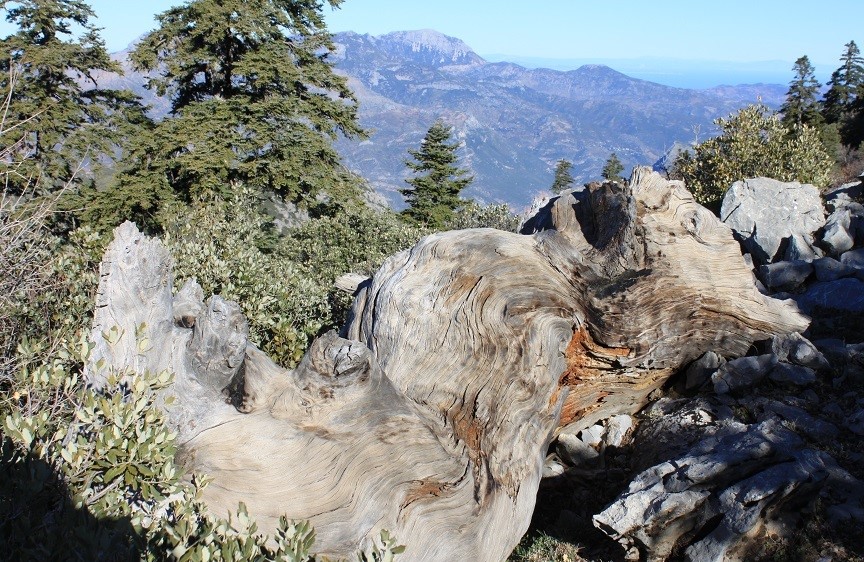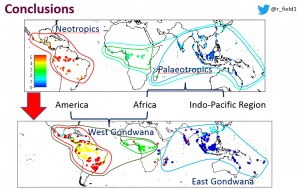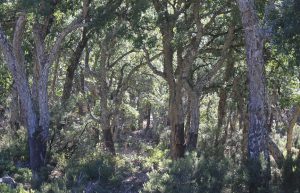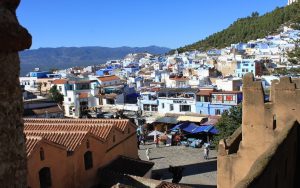
September 17, 2019, by lzzeb
A semester immersed in researching plant geography
A blog by Richard Field
A semester of research leave can be used for many activities, but for family reasons I have always remained in Nottingham, trying to take maximum advantage of the time freed up by the greatly reduced teaching and administrative responsibilities. The opportunity is palpable: after a period of low ebb in terms of my research in the preceding few years (due in part to having two very young children), my 2014 research leave kick-started what has been by far the most productive period of my career to date, at least in terms of scientific papers. A key aim this time round was to maintain that momentum, which was being threatened by a large backlog of papers that required my input. I am pleased to say that this backlog has now mostly been cleared and fresh initiatives started. There are some nice papers just published, in press, in review or revision, and soon to be submitted.
One paper that benefitted from my research leave and was published along with a press release by the University [https://www.nottingham.ac.uk/news/pressreleases/2018/november/from-the-arctic-to-the-tropics-researchers-present-a-unique-database-on-earth’s-vegetation.aspx] – a first for me – was the first global analysis of the relationships between environment and the traits of plant communities. Plant ‘traits’ are their physical and chemical characteristics. This paper (Bruelheide et al., Nature Ecology and Evolution: https://doi.org/10.1038/s41559-018-0699-8) resulted from a project, led from Leipzig, to pull together a very large, global database of vegetation plots and link it to an existing initiative to pull together plant trait data for as many of the world’s plant species as possible. We also published a database paper – again benefitting from my research leave – to present this major new dataset (Bruelheide et al. 2019 Journal of Vegetation Science 30: 161–186, DOI: 10.1111/jvs.12710).
These two papers were also co-authored by my colleague in the School of Geography, Dr Franziska Schrodt, who herself has been benefitting from her Anne McLaren Fellowship. With both of us effectively on research leave, it was wonderful for us to have sufficient time to develop ideas, projects and papers. As a result, we have recently made major strides in our joint research on geodiversity and its relationship with biodiversity. We have submitted several funding applications connected to this work, with more in preparation, and have two jointly supervised PhD students who will start this autumn. Gratifyingly, we have just published two nice papers from this research programme, one as a defining contribution to a special issue on Alexander von Humboldt and his pioneering work on the relationships between the geo-environment and biodiversity (Schrodt et al. 2019 Journal of Biogeography 46: 1631–1642, DOI: 10.1111/jbi.13616). This featured in a science spotlight piece in The Guardian on 13th Sept 2019 (https://www.theguardian.com/news/2019/sep/13/weatherwatch-alexander-von-humboldt-prussian-polymath-who-founded-modern-meteorology). The other paper, just published and accompanied by another press release [https://www.nottingham.ac.uk/news/new-sustainability-initiative-put-forward-by-scientists], kick-starts a major initiative to develop ‘Essential Geodiversity Variables’ to improve the scientific rationale for sustainable development of the world’s geo-resources (Schrodt et al. 2019 PNAS 116: 16155–16158, DOI: 10.1073/pnas.1911799116).
Some of the papers I was working on during my research leave were led by PhD students, and I was glad to have a bit more time to be able to devote to them. One nice outcome was the publication of a paper led by Catherine Waite on using drones to map liana infestation of tropical rainforest in Borneo (Waite et al. 2019 Journal of Applied Ecology 56: 902–912, DOI: 10.1111/1365-2664.13318). Publication of this was accompanied by yet another press release! [https://www.nottingham.ac.uk/news/pressreleases/2019/jan/new-research-is-using-drones-to-tackle-climate-change.aspx].
A major highlight of my research leave was attending the International Biogeography Society conference in Malaga, Spain. At the conference, as well as finishing my 8-year stint on the Board of the society, I was honoured to be giving one of the plenary talks. This was as the opening speaker in a plenary symposium on whether we need to re-evaluate the world’s tropical and sub-tropical biomes and biogeographic regions. The symposium was inspired by a paper I co-authored, which had been led by the marvellously named Prof. Ferry Slik (Slik et al 2018 PNAS 115: 1837–1842, DOI: 10.1073/pnas.1714977115), and my task was to both convey the excitement that our findings represent and ensure that those findings were clearly set out. Below, I include the final slide, trying to illustrate the shift in our understanding of the origins and classification of the world’s tropical forests from before (top of slide) to after (bottom) our research. It seemed to go well, judging by the amount of interest generated, and invitations I have since received (e.g. for a keynote talk at another conference).
As always with the biogeography conferences, the Malaga one was very hectic, with Board meetings, ask-the-editor sessions and other journal-related meetings (I am Deputy Editor-in-Chief of two of the four main biogeography journals) and lots of great science being presented. Plus most of my PhD students and international collaborators were there. Unfortunately, I was struggling badly with a chest infection, but managed to attend everything and came away with several new projects and collaborations.
When research leave mostly involves staying in Nottingham and making as much research progress as possible, it doesn’t result in as wide an array of photos as when it is spent in some exotic location. However, the Malaga conference, and its optional field trip to Morocco, allows me to provide a few photos (below and at the start of this blog). I had never been to Morocco before, and it is biogeographically very interesting, with a mix of Mediterranean, Saharan and montane elements.
Last but not least, stemming from my research leave I have now started a series of new projects and initiatives. I wanted to use the opportunity to develop projects in new areas for me – in particular some more applied areas. My research to date has mostly been developing theory and testing hypotheses – trying to achieve a better understanding of the natural world by asking big questions with continental or global focus, and analysing large datasets to get answers (‘macroecology’). This is great in terms of interest, publishing in high-ranking journals and being cited a lot. It also has the advantage of only needing time, expertise and a computer with an internet connection, but (probably partly as a result) is very rarely awarded grants from research councils or other major funding bodies. The current research climate in the UK (as many other places) puts much greater emphasis on applied research and ‘impact’, and stemming from my research leave I am developing some proposals for applying our knowledge to solving conservation-related problems. I look forward to this new chapter in my research career that my research leave has helped to open.
No comments yet, fill out a comment to be the first






Leave a Reply